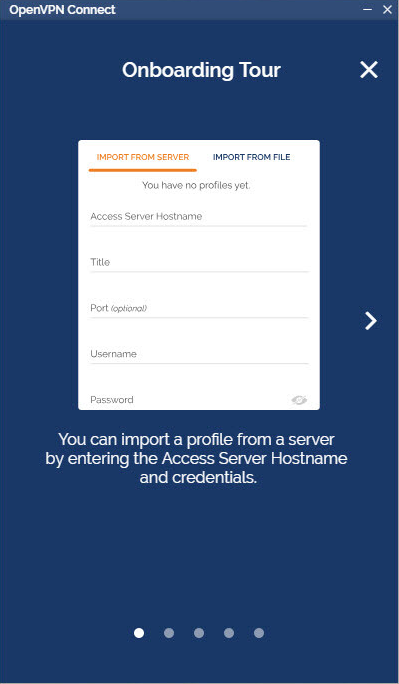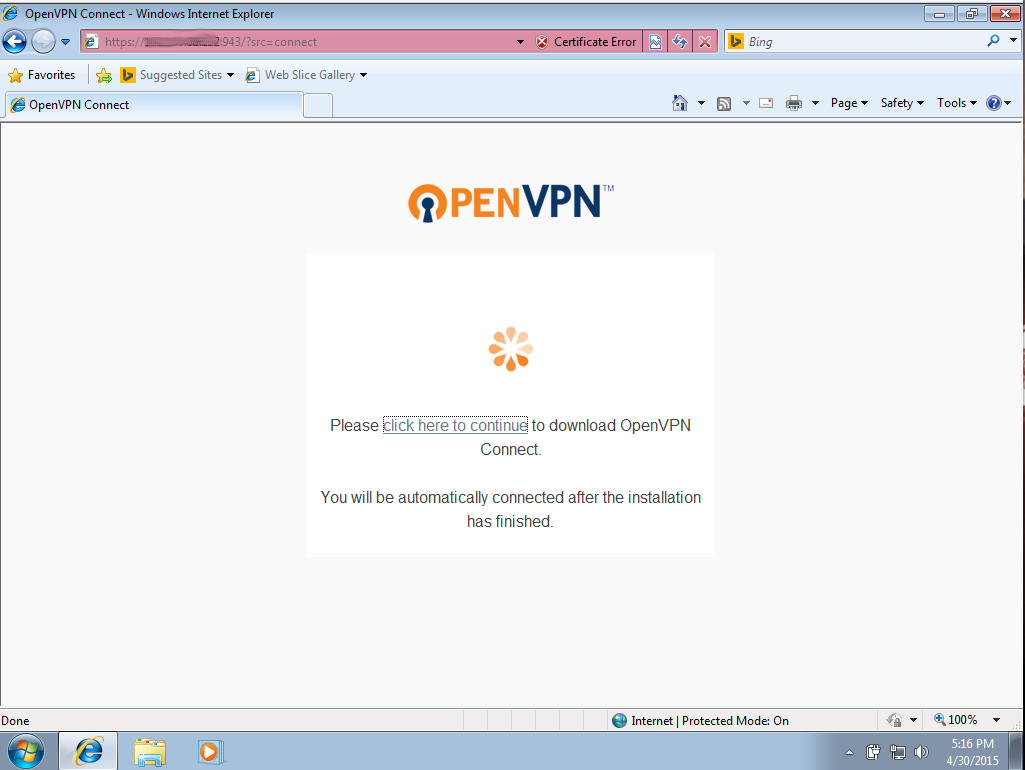- OpenVPN Connect is a powerful package, but it won't be able to connect to your VPN until it has all the necessary configuration files, the settings which define how each connection should work.
- You can specify a script to be run as you connect to your vpn through openvpn with the up directive (among a few others that will run on different times during initalization). You may need to set script security too for that. Just append the following to your foo.ovpn file. Script-security 2 up /path/to/script.sh.
Mar 16, 2021 The OpenVPN client v2 is called “OpenVPN Connect Client” and has been in use for many years. It is still available from our website and offered in the OpenVPN Access Server client web interface itself. Nov 01, 2014 Hi there, I'm new to OpenVPN, so this is quite possibly a stupid mistake or incredibly basic question I'm asking, so please bear with me. I'm using OpenVPN as a server on my Netgear WNDR3700v2 router, running the latest build of dd-wrt (DD-WRT v24-sp2 (10/27/14) std - build 25179). The OpenVPN Connect Client for Windows, latest version, currently supports these operating systems: Windows 10; Windows 8 and 8.1; Windows 7 Service Pack 1; Windows Vista Service Pack 2; For Windows Server platforms we recommend the open source OpenVPN client. It comes with a service component that starts an auto-login connection as a system.
Here is what I'm getting on the client computer. First, the route without VPN:Route after VPN connection (45.33.15.172 is the VPN server address):
Code: Select all
And finally pinging first the VPN server then google dns (after VPN connection):server.conf
Code: Select all
To minimize firewall interference I tried to turn everything off and then just enable forwarding (blindly following commands from https://wiki.archlinux.org/index.php/Internet_sharing). I have tried everything with a 'normal' firewall as well but same behavior.From the same site I also confirmed that ip forwarding is enable on the systemCode: Select all
In this article i am showing how to install OpenVPN client on RPM/DEB-based Linux distributions and configure it to connect to OpenVPN server.
Particularly i will show an example of OpenVPN client configuration file that i use to connect to OpenVPN server with certificates and username/password-based authentication, how to create a systemd service for OpenVPN client and how to configure it to start on the system’s boot.

Install OpenVPN Client
Use one of the commands below, depending on your Linux distribution, to install OpenVPN.
Fedora/CentOS/RedHat:
Ubuntu/Debian/Raspbian:
Config OpenVPN Client
Create OpenVPN client configuration file and save it in /etc/openvpn/client/ directory.
OpenVPN Sample Configuration Files: Depending on your Linux distribution, if you have installed OpenVPN from an RPM or DEB package, you can find sample-config-files directory in /usr/share/doc/packages/openvpn (Fedora/CentOS/RedHat) or /usr/share/doc/openvpn (Ubuntu/Debian/Raspbian).
OpenVPN client config file example:
In the example above, my OpenVPN client is configured to connect to OpenVPN server using certificates and username/password-based authentication.
Create a folder to store certificates and and a file with credentials:
Save credentials in /etc/openvpn/keys/connect-sample-creds.conf file:
Also save your certificates in /etc/openvpn/keys/ folder and set more strict permissions:
Start OpenVPN client service:

To configure OpenVPN client service to start automatically on system’s boot, enable the service using the following command:
Troubleshoot OpenVPN Client Connection Issues
Check your public IP:

Openvpn Connect Client Download For Windows
Check OpenVPN client service status:
Openvpn Connect Client Mac
Check logs: